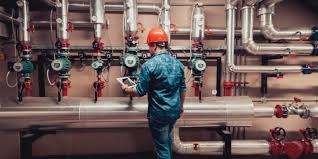Heat Treatment Parameters for 1080 Square Bar: Temperature, Time, and Quenching

Strong 8k brings an ultra-HD IPTV experience to your living room and your pocket.
1080 steel is a widely used high-carbon steel, especially popular in the manufacturing of knives, springs, blades, and various tool components 1080 square bar heat treat . Its approximately 0.80% carbon content gives it excellent hardenability and strength after proper heat treatment. The heat treatment process is critical to unlocking the optimal performance of 1080 square bars by enhancing hardness, toughness, and wear resistance.
To achieve these properties consistently, it is essential to understand and control the key heat treatment parameters: temperature, time, and quenching method. These factors collectively influence the microstructure transformations in the steel, which ultimately determine its mechanical properties.
In this article, we will explore the fundamental heat treatment parameters for 1080 square bars and provide practical guidance for controlling each step of the process to achieve the best results.
Understanding the Basics of 1080 Steel Heat Treatment
1080 steel contains enough carbon to be heat treated through austenitizing, quenching, and tempering. The primary goal during heat treatment is to transform the steel's microstructure from ferrite and pearlite into martensite, a hard and strong phase, while tempering balances hardness with toughness.
Key parameters to focus on during heat treatment include:
Austenitizing Temperature and Time
Quenching Medium and Technique
Tempering Conditions
Austenitizing Temperature and Time
The austenitizing step involves heating the 1080 square bar to a temperature where its crystal structure transforms into austenite, a face-centered cubic phase capable of dissolving carbon uniformly.
Ideal Austenitizing Temperature
For 1080 steel, the optimal austenitizing temperature generally falls within the range of 800°C to 850°C (1470°F to 1560°F).
Staying within this range ensures full transformation of the microstructure without causing excessive grain growth.
Temperatures above 860°C risk grain coarsening, which can reduce toughness and lead to brittle behavior.
Soaking Time
The soaking time at the austenitizing temperature is crucial for uniform temperature penetration and phase transformation.
For typical square bar thicknesses, a soaking time of 20 to 30 minutes is sufficient.
Thicker bars require longer soaking to ensure heat penetrates to the core.
Insufficient soak time may result in incomplete transformation, leaving softer regions and reducing overall hardness.
Heating Equipment
Controlled heating in an electric furnace or heat-treating kiln is preferred to maintain precise temperature and uniformity.
For smaller batches or individual bars, a gas forge or induction heater can be used, but attention must be paid to temperature control and even heating.
Quenching: Medium and Method
Quenching rapidly cools the austenitized 1080 steel, transforming the austenite into martensite, the hard and wear-resistant microstructure necessary for high-performance applications.
Choosing the Quenching Medium
Oil Quenching: The most commonly recommended medium for 1080 steel, oil provides a moderate cooling rate sufficient to produce martensite while reducing thermal stresses that can cause cracking and warping.
Water Quenching: Faster cooling but increases the risk of distortion and cracking, especially for thicker or more complex shapes.
Air Quenching: Not suitable for 1080 steel due to its high carbon content; cooling is too slow to form martensite fully.
Quenching Technique
The steel must be immersed in the quenching medium immediately after removal from the furnace.
Gentle agitation of the quenching medium during immersion is recommended to prevent vapor pockets and ensure uniform cooling.
Avoid delayed quenching, as any temperature drop prior to immersion can cause uneven transformation and reduced hardness.
Cooling Rate Considerations
The cooling rate must be fast enough to suppress the formation of softer phases like pearlite or bainite.
Oil quenching balances cooling speed and thermal stress, making it ideal for square bars of varying thickness.
Controlling oil temperature between 50°C and 70°C (120°F to 160°F) helps maintain consistent quenching performance.
Tempering: Time and Temperature
After quenching, the steel is very hard but brittle. Tempering is necessary to relieve internal stresses, increase toughness, and reduce brittleness without sacrificing too much hardness.
Typical Tempering Parameters for 1080 Steel
Temper at temperatures between 150°C and 200°C (300°F to 400°F).
Duration typically ranges from 1 to 2 hours depending on bar thickness and desired properties.
Multiple tempering cycles (two or three passes) can further improve toughness.
Effects of Tempering
Tempering transforms some martensite into tempered martensite, which is less brittle and more ductile.
Adjusting tempering temperature and time allows fine-tuning of mechanical properties depending on the intended use of the bar.
Additional Practical Tips
Preheating Thick Bars
For thick square bars, preheating to approximately 500°C (930°F) before austenitizing reduces thermal shock.
This helps avoid cracking and warping during rapid heating and cooling cycles.
Avoiding Decarburization
Decarburization occurs when carbon is lost from the steel’s surface during heating, reducing surface hardness.
Use controlled atmosphere furnaces or protective coatings such as heat-treating compound or charcoal to minimize carbon loss.
Minimize exposure time at high temperatures to further prevent decarburization.
Monitoring and Testing
Use thermocouples or pyrometers to accurately monitor furnace temperature.
Perform Rockwell hardness testing after tempering to ensure hardness falls in the target range of 55-60 HRC for 1080 steel.
Conduct visual inspections for warping, cracks, or surface scale.
Conclusion
Heat treating 1080 square bars requires careful control of temperature, time, and quenching methods to optimize mechanical properties. By maintaining the austenitizing temperature between 800°C and 850°C with appropriate soaking times, using oil quenching to produce a uniform martensitic structure, and tempering at moderate temperatures to balance hardness and toughness, manufacturers can achieve durable, high-performance components.
Proper attention to these heat treatment parameters and adherence to best practices will result in 1080 steel square bars that meet demanding requirements for strength, wear resistance, and toughness.
Note: IndiBlogHub features both user-submitted and editorial content. We do not verify third-party contributions. Read our Disclaimer and Privacy Policyfor details.





